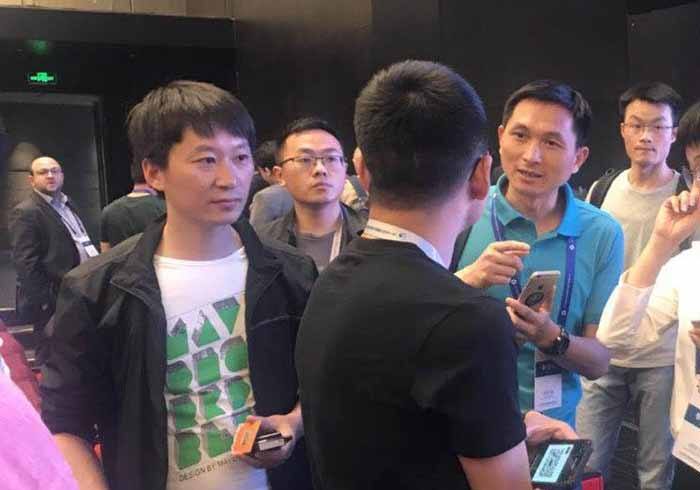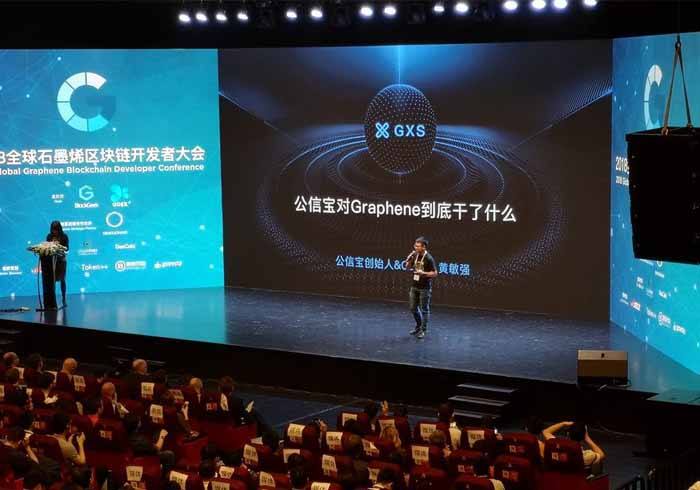What Is GXChain?
In recent years, with the rapid development of the Internet and the popularization and application of information technology, the data generated by various industries and institutions has grown explosively. For the whole society, this is a huge treasure trove of continuous expansion. However, as the data volume increases geometrically, giants' monopoly on data and the situation of inter-institutional information silos also need to be broken. "The exchange of data", behind this contains a huge increase in productivity and business value.
Data is the most important production resource in the future. Not only is it of a large scale, but it will continue to change with changes in people's behavior. It will become the key to our measurement and understanding of business and society in an era. It will also be the standard for the entire industry. Blockchain technology is one of the most important basic technologies in the future. It builds a trusted value Internet that all participants can maintain together. And as a trust network for transmission value, it can make data, the most important production resource, the cost in circulation to a minimum.
It can be said that blockchain, the most important underlying technology in the future, combined with data, the most important social resource in the future, can release enormous commercial value and social value. The mission and vision of Gongxinbao is to build it here. We have developed a series of application products based on blockchain and data. Among them, the bottom line is our public chain - public letter chain (GXChain), public letter chain = blockchain + big data.
The positioning of the public trust chain is based on the establishment of a trustworthy domain-wide data exchange value network based on blockchains, so that all fields of data can be freely shared, trusted, and highly efficient shared and exchanged, allowing data to gradually move away from monopoly, and information is no longer available. There are islands that allow data to provide higher value for business and our lives.
- Overview - Table of Contents
- What Is GXChain?
- Getting Started With GXChain
- How To Get A GXChain Wallet?
- GXChain Resources
- How To Buy GXChain?
- Where To Spend GXChain?
- Latest GXChain News
GXChain (Public Message Chain) is a data exchange public block chain created by the KPX team. It is the underlying chain of the KPX data exchange. It not only supports the high-frequency data exchange of the KPX data exchange, but also supports developers to develop applications. . Development and application on the public letter chain can not only make use of the technical characteristics of the blockchain, but also obtain the support of multi-dimensional data of various industries, and make valuable applications that are very valuable to the people's livelihood.
The application that has been developed and launched proves the commercial availability of the public trust chain. Based on GXChain's first enterprise application, the public trust decentralized exchange, it was officially commercialized on September 24, 2017. Based on the second application of the public letter chain, and also the first large-scale personal application - public letter Dapp has been officially launched on January 12, 2018, on-line for 18 days, the number of users through real-name certification has exceeded 420,000, once again reflected The commercial value of Gongxinbao in the data economy.
The public credit chain uses DPoS and PoCS to implement a consensus mechanism for block chain accounting and data exchange.
The DPoS (Delegated Proof of Stake) mechanism originates from Graphene. The Chinese name is called the Share Authorization Proof Mechanism (also known as the Trustee Mechanism). Its principle is to allow each person holding a token to cast a vote, resulting in 101 votes. Representative, we can understand it as 101 (super-expandable) super nodes or mine pools, and the 101 super nodes have exactly the same rights. From a certain perspective, DPOS is somewhat like a parliamentary system or a people’s congress system. If delegates cannot perform their duties (when they are not able to generate blocks) they will be delisted and the network will elect new super nodes to replace them.
The PoCS (Proof of Credit Share) mechanism is a consensus mechanism for the independent design and development of the public trust chain. The Chinese name is called the credit contribution verification mechanism (also known as the shared exchange balance mechanism) to solve the problem of sharing and exchange imbalance between enterprises with large data volumes. problem.
Each time a member of a coalition completes a data transaction, a PoCS is calculated once, the contribution ratio is calculated based on the number of transactions, and the data transaction fee is calculated. PoCS low affiliates will pay for higher data than the benchmark fee, and PoCS-high affiliates will pay for data at a lower cost than the benchmark.
PoCS and transaction fees realization of the principle of pseudo-code as follows:
if ((total_sell + total_buy) >= pocs_threshold) {
pocs = calculate_pocs(total_sell, total_buy);
fee = scale_fee(pocs, data_transaction_base_fee);
} else {
fee = data_transaction_base_fee;
}
Pocs: Contribution ratio, a coalition member has one and only one contribution ratio in a coalition.
Total_sell: The total number of times the current account sold data.
Total_buy: The total number of times the current account purchases data.
Pocs_threshold: The product threshold. If the total number of current account transactions is greater than or equal to this threshold, the calculation of the participation ratio final participation fee is enabled.
Data_transaction_base_fee: The benchmark fee regardless of the contribution ratio, that is, the handling fee in the global parameter.
Calculate_pocs: Calculates PoCS based on the number of buy and sell data.
Scale_fee: adjust transaction fee according to pocs.
DPoS Consensus Mechanism
The main consensus mechanism of the existing blockchain project is PoW and PoS. A few of the projects use the modified BFT (Byantin Fault Tolerance) consensus mechanism. BTC is the most successful cryptocurrency under the PoW mechanism. Although PoW has successfully demonstrated its long-term stability and relative fairness, under the existing framework, using PoW's "mine mining" form will consume a lot of energy.
The energy it consumes is just constantly doing SHA256 calculations to ensure that the workload is fair and there is no other significance. At present, the transaction efficiency that BTC can achieve is about 5 TPS (5 pen/s). Ethereum is currently subject to the upper limit of the single-block GAS total.
The transaction frequency that can be achieved is about 25 TPS, and the average thousand-times per second, peak energy VISA and MASTERCARD, which achieve a processing efficiency of 10,000 times per second, are far from one another.
The more mature digital currencies under the PoS mechanism are Peercoin and NXT. Compared to PoW, the PoS mechanism saves energy, and introduces the concept of “coin days” to participate in random operations. The PoS mechanism allows more holders to participate in the accounting work without the need to purchase additional equipment (miners, video cards, etc.).
The computing power of each unit token is positively related to the length of time it is held. That is, the more tokens the owner holds and the longer the token, the greater the probability that the token can be signed and produced. Once it has signed the next block, the currency held by the holder is cleared and the cycle is re-entered. Under the PoS mechanism, because the signer of the block is randomly generated, some coin holders will hold the token for a long time to obtain a block of higher probability, and to clear as many of his coins as possible. day".
As a result, circulation tokens in the entire network will be reduced, which will be detrimental to the circulation of tokens on the chain, and prices will be more susceptible to fluctuations. Since there may be a situation in which a large number of big players hold most tokens in the entire network, the entire network may tend to be more centralized as the running time increases. Compared to PoW, the cost of doing evil under the PoS mechanism is very low.
- Overview - Table of Contents
- What Is GXChain?
- Getting Started With GXChain
- How To Get A GXChain Wallet?
- GXChain Resources
- How To Buy GXChain?
- Where To Spend GXChain?
- Latest GXChain News
Therefore, for the attack of bifurcation or dual payment, more mechanisms are needed to ensure consensus. In steady conditions, about 12 transactions can be generated per second, but due to network delays and consensus issues, it takes about 60 seconds to broadcast the consensus block completely. In the long run, the speed of generating blocks (ie, clearing the “currency”) is much lower than the speed of network broadcasting and broadcasting. Therefore, under the PoS mechanism, “restricting the speed” of the generated blocks is needed to ensure the stability of the main network. run.
In order to achieve a qualitative breakthrough in processing efficiency, the DPoS mechanism responded. The DPoS mechanism requires that before the next block is generated, it must be verified that the previous block has already been signed by the trusted node.
Compared to PoS's “National Mining”, DPoS uses a system similar to the “congress” to directly select trusted nodes. These trustworthy nodes (ie, witnesses) replace other holders to exercise power. Witnesses The nodes are required to be online for a long time, which solves a series of problems such as block delays that may occur due to PoS signing blocks being not always online.
The DPoS mechanism can generally achieve a transaction speed of 10,000 times per second, and can reach a class of 100,000 seconds when the network delay is low, which is very suitable for enterprise-level applications. Because the public trust data exchange requires high data transaction frequency and requires long-term stability, DPoS is a very good choice.
Characteristics of GX Chain
High performance and scalability - The public letter chain is a public chain with high concurrent processing capabilities. It generates a block every 3 seconds and has a processing capability of up to 100,000 transactions per second. Considering the possibility of future business growth on the chain, the public trust chain supports horizontal expansion. This can quickly expand the transaction processing capacity per second, and does not require bifurcation to reach consensus.
Dynamic adjustment of parameters - The public information chain can modify system parameters without bifurcation, and realize the dynamic adjustment of global parameters such as block size, block-out speed, and handling fee through consensus voting.
For example, a block is output every 3 seconds, and parameters can be dynamically adjusted to a block per second. The current block size is 2 M, and it can be dynamically adjusted to a large block, such as 8M.
Data supply - The decentralized data exchanges developed on the public trust chain support data transactions and exchanges in many fields, and businesses and individual developers can trade in and use these data.
BaaS service - The public trust chain also provides some support such as the BaaS (Blockchain as a Service) interface for storage and authentication. The developer develops a real-valued area based on the rich BaaS-API, data transaction API, and native APIs. Block chain application.
Application development based on public letter chain - Compared with other public blockchains, applications developed based on public letter chains have data support from various industries, allowing developers to make more practical commercial applications.
Digital Asset Distribution - The publishing standards for digital assets on the public trust chain allow developers to freely distribute and distribute applications.
Code open source - The public trust chain and related code have been completely open sourced on Github. Open source address https://github.com/gxchain
Getting Started With GXChain
For Individual Users
Wallet - Wallet is used to manage digital assets issued on the public trust chain. At present, we have developed support for four different environments: PC version, mobile version, browser version, and command line version.
PC version - supports Windows 32bit and 64bit, Linux desktop, MacOSX version.
Mobile version - supports ios and android dual systems, in addition to digital assets can be kept, the mobile version also achieved the exchange of market exchanges, and the future will also open up with the digital asset exchange.
The Browser Version - is very light-weight online use, supporting all features of the PC version. Entrance https://wallet.gxb.io
The command line version - is relatively complex and is provided for use by professional users. For example, an engineer at a digital asset exchange is advised to use it with the command line experience and related technical background.
Wallet download address - https://gxs.gxb.io/#downLoad
Public Letter Dapp - Block City - Gongxinbao Dapp is the first large-scale personal mobile application developed on the public letter chain GXChain. It is dedicated to solve personal data management and sharing issues. Public Trust Dapp allows users to create blockchain identities and allows users to authorize and manage personal data so that personal data ownership is truly attributed to users. Dapp's endogenous incentive mechanism will encourage users to upload multi-dimensional and more comprehensive identity tags.
Dapp neither caches data nor protects user privacy. With the user's authorization, this data can have a very rich application scenario. This is not only a process from the real world to the data world, but it is also a reflection of data to promote the evolution of the real world. In a transparent network such as a blockchain, bad behavior by bad people will be recorded forever, and their cost of doing evil is very high.
Gongxinbao will use blockchain technology to reduce the number of bad guys in the real world, use blockchain technology to solve data silos, and use blockchain technology to complete absolute trust. In the end, we used blockchain technology to build a credit society with high efficiency and high happiness.
For Business Users
Decentralized Data Exchange - Gongxinbao's team developed a decentralized data exchange on the public information chain. Data exchanges have the characteristics of not caching data, protecting personal privacy, protecting data copyright, effectively suppressing manufacturing fraud, and supporting two-way anonymous transactions.
The typical clients are Internet loans, automotive finance, consumer finance, banks, etc., as well as government agencies, insurance, medical, logistics, and other enterprises that have data exchange needs. They have solved all kinds of industries with decentralized thinking.
There are many core issues that have not been resolved in data security exchange and circulation. It can be used by the whole society and is widely used in various application scenarios such as the study, work, and life of citizens, so that the data can be released to be valuable and the efficiency of social collaboration can be enhanced.
For Developers
The public trust chain supports developers to call open APIs to develop applications, namely, data transaction API, BAAS-API, native API, and statistical analysis API.
Data Transaction API - After the developer has authenticated, after installing GXB-BOX, the point-to-point API will allow developers to pay for the public data exchange of KMSO to centralize the data exchange to enrich the practical value of the application.
BAAS-API - The public letter chain integrates the IPFS technology. BAAS will initially provide business data storage, object storage, and verification services. Developers can store application data on the public letter chain and implement data deposit book disclosure and process verification.
Native APIs - You can call many blockchain native APIs in the command line wallet to access the blockchain ledger records and send transactions directly.
Statistical Analysis API - Officially open to the developer the data statistical analysis service API on the blockchain, which is helpful for developers to do some calculation and display functions.
Block Browser API - The Block l browser implements the functions of block, transaction record, and account information. It also provides web pages and APIs to query in two ways. Different users can choose according to different needs.
How To Get A GXChain Wallet?
First, click "WALLET" on https://gxs.gxb.io/en/
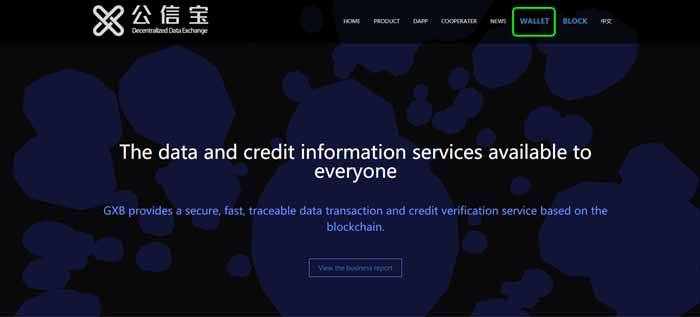
Make sure your language is "English", and "Create account".
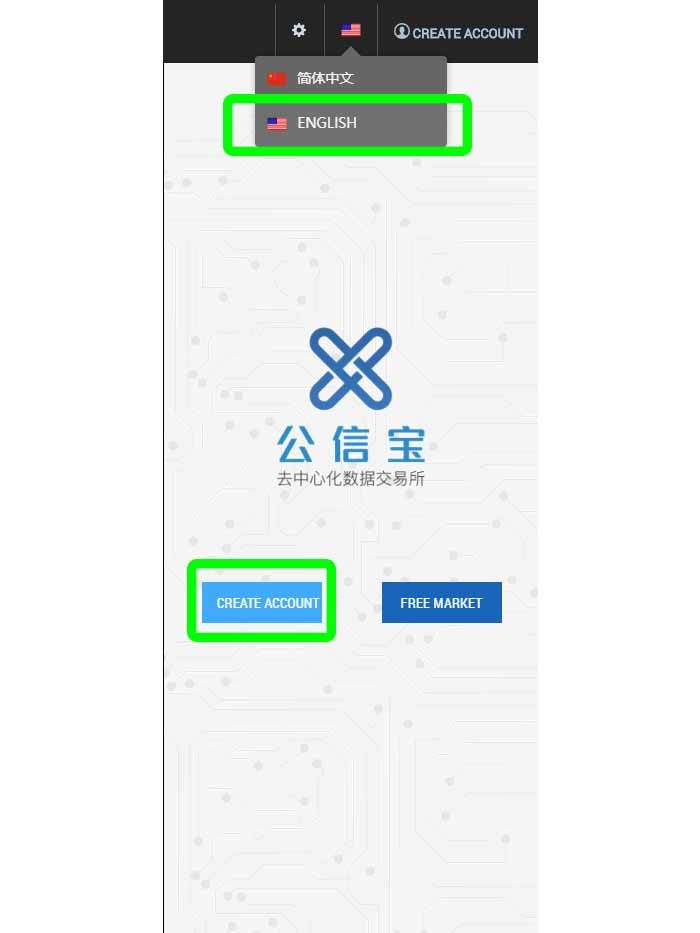
Input your account name, which will be your "public key" for accepting deposit. If you already have an account, choose "restore wallet from backup".
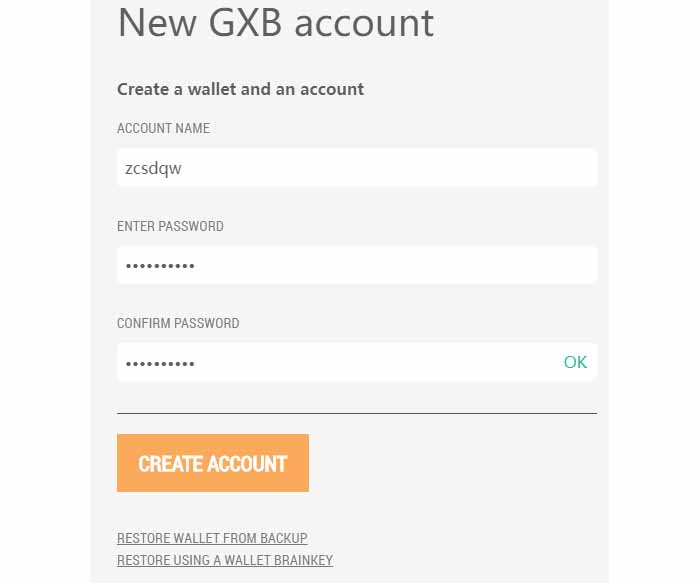
Click "Account" to see your balance of GXShares
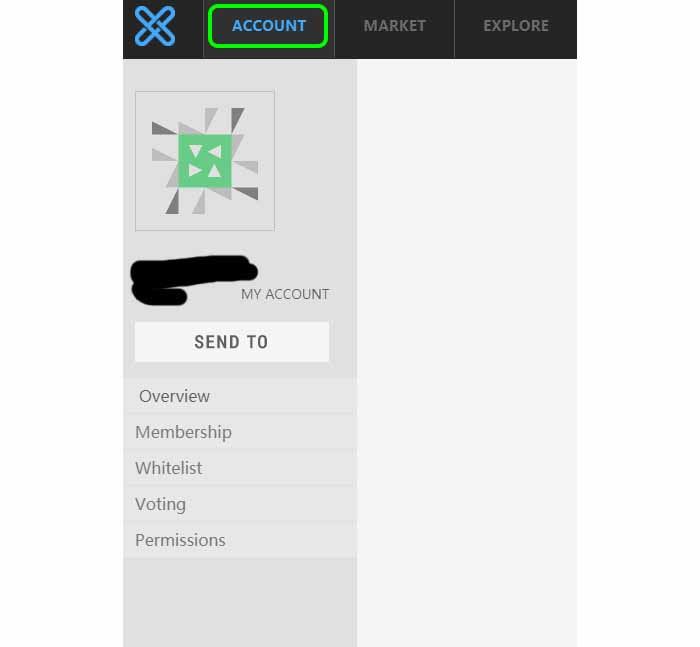
GXChain Resources
How To Buy GXChain?
Step-by-Step Guide
Sign up for the right exchanges
Coinbase
Sign up here.
Add a credit or debit card.
Binance
Sign up here.
Purchase Ethereum on Coinbase
Log in to Coinbase and go to "Buy/Sell".
We recommend you purchase Ethereum, and you should use a debit/credit card or money deposited into your USD Wallet.
Your Ethereum should be available instantly and visible in your accounts list.
Get Your Binance ETH Deposit Address
Log into Binance and select "Funds->Deposits Withdrawals".
Make sure the "Hide small assets" option is not selected.
Type "eth" into the search bar.
On the right, click "Deposit".
Copy the "ETH Deposit Address", this is where you will send your ETH.
Send your Ethereum from Coinbase to Binance
In Coinbase, click "Accounts" and look for your ETH Wallet.
Under ETH Wallet, click "Send".
Paste the "ETH Deposit Address" from Binance into the "Recipient" field.
Enter the amount you would like to send to Binance in the "Amount" field.
Verify that everything looks ok and click "Continue".
A new screen titled "Confirm Send" will appear. Verify the information is correct and, if so, click "Confirm".
Your Ethereum is now being sent to Binance.
<p>  The Ethereum network will run a set of confirmations that will verify the transfer and then it will be available in Binance.</p>
<p>  Within a few minutes, you should be able to go to Binance and see that the transaction has started.</p>
Trade your Ethereum for GXS
.
Once your transfer is complete, your Ethereum will be available for trading.
Click here to go to the GXS/ETH trading pair.
Below the price graph, you will see options to Buy and Sell GXS.
To buy GXS at the current market rate, click "Market".
Enter the amount of GXS you would like to buy, or use the percentage options to use a percentage of your overall ETH to purchase.
Click the "Buy GXS" button.
Where To Spend GXChain?
Asset Introduction and Use
GXC - GXC is a billing digital asset for merchants (corporates, institutions, etc.) that verify the purchase and sale of data on the public trust data exchange. It is 1:1 anchored and the value remains unchanged. This ensures that the cost of purchasing data is stable. GXC is a data transaction payment token in the public information data exchange, and customers need to pay GXC to purchase data.
GXS - GXS is a digital asset on the GX Chain, which is a digital asset used by individual users. It not only has a circulation value, but it is also a must-have encrypted digital asset based on public letter chain application. Its application value is mainly reflected in the following aspects:
- Overview - Table of Contents
- What Is GXChain?
- Getting Started With GXChain
- How To Get A GXChain Wallet?
- GXChain Resources
- How To Buy GXChain?
- Where To Spend GXChain?
- Latest GXChain News
1. The development, certification of applications on the public trust chain, use of chain services (such as miner's fees for transfer on the chain) requires the payment or burning of GXS, and GXS is the only one running as an application on the chain. Token used.
2. As more and more customers and data sources of Kyungpho cooperate, the transaction volume of data exchanges will increase, and public trust will receive more commissions. The team will regularly take out 10% of the commission income. At that time, the price of the secondary market was repurchased and destroyed.
3. Can be used as a ballot when electing witnesses.
4. In the TOC product public trust Dapp, GXS will be an important payment method. It is embodied as: 1) Residents use GXS for settlement each other; 2) Use city public services to settle with GXS; 3) Merchant services also need to be purchased with GXS; 4) Complete the tasks of the merchant, or participate in when some of the activities, GXS will receive as an incentive.
Distribution Mechanism
The total amount of GXS is 100 million shares, which is divided into three parts: ICO share, private equity, and public confidence fund share. The detailed distribution is as follows:
Total GXShares: 100,000,000 shares
Total public offerings: 39,000,000 shares, accounting for 39%.
Total private equity: 10,000,000 shares, accounting for 10%, for distribution to the earliest private equity investors
Gongxinbao Foundation holds 51,000,000 shares, accounting for 51%
Shares held by the KTX Foundation are restricted-tradable shares and are released on an annual basis. The maximum amount released in the first year accounts for 6% of the total number of public trust shares (ie, 6,000,000 shares are released in the first year), which is used for promotion plans (recruitment of consultants). , talent recruitment, community building, and ICO recommender awards, publicity and promotion, etc.), release up to 5% each year thereafter. The foundation's currency holding account is open to the whole society, and the use of funds, plans for use, etc. are announced on its website, and social supervision is accepted.
Buyback Mechanism
Gongxinbao will use 10% of the commission income of the data exchange to buy back the public shares (GXS) issued on the secondary market. The repurchased public trust shares will be transferred to the destruction account for destruction. We will ensure that the entire process is transparent: The repurchase records will be publicized at the first time, and users will also be able to query through the public channel blockchain browser. This process will continue until the total number of public companies that destroy ICO+ private placements (3,451) Million shares) so far.
The cycle of repurchasing and destruction: After the launch of the public trust data exchange, the first year will take a period of 3 months. The first repurchase will take place in December 2017. Gongxinbao will use the 10% recovery tokens of the data exchange commission revenue for destruction; in the second year, the tokens will be recycled every 2 months; in the third year, the tokens will be recycled in a one-month cycle for destruction. The total amount of GXS will not be increased, and the liquidity will gradually decrease after the repurchase and destruction.
- Overview - Table of Contents
- What Is GXChain?
- Getting Started With GXChain
- How To Get A GXChain Wallet?
- GXChain Resources
- How To Buy GXChain?
- Where To Spend GXChain?
- Latest GXChain News
Gongxinbao's recovery token destruction account is: null-account. This is an initial account. No one can master its private key and use the assets in the account. The query can be made using the public chain blockchain browser. Browser address: https://block.gxb.io
About the transaction volume, transaction amount and commission income data of the data exchange, you can log in the public information treasure website wallet to inquire, the specific method is as follows:
1. Login public letter treasure website wallet: https://wallet.gxb.io
2, click on the upper left Corner's "browse" button.
3. Click the "Statistics" button to query the data exchange's transaction data.
Latest GXChain News
Vincent Huang, founder and CEO of GXChain, gave a keynote speech "What on earth GXChain has done to Graphene". Glad to see he was swamped by audiences after the presentation.
